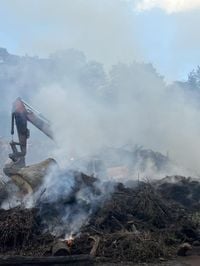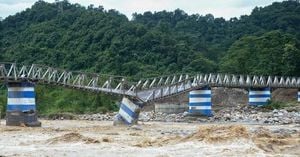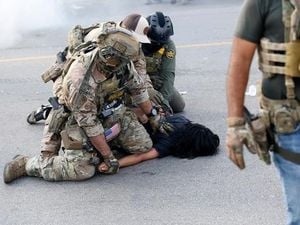On a warm late-August afternoon in 2025, two communities—one in the English village of Buckden, the other in Clinton, Connecticut—found themselves confronting the threat and disruption posed by fire. While the circumstances and outcomes differed, both incidents underscored the delicate balance between human activity, nature, and the swift response required when flames threaten to get out of hand.
In Buckden, Cambridgeshire, the calm of Silver Street was abruptly broken at 1:01 p.m. on August 27. According to the Hunts Post, crews from St Neots, Gamlingay, and the north roaming fire engine rushed to the scene after reports of a grass fire spreading rapidly. The urgency was palpable as firefighters arrived to see flames racing through the dry grass, threatening to leap beyond their initial boundaries. "Firefighters arrived to find grass on fire that was spreading quickly," a spokesperson for Cambridgeshire Fire and Rescue Service stated, emphasizing the potential for disaster if not swiftly contained.
Armed with hose reels and years of training, the firefighters worked in tandem, battling the blaze and ensuring it did not encroach on nearby properties or infrastructure. Their efforts paid off: the fire was extinguished before it could do more than scorch the earth and rattle local nerves. Relief washed over the village as it became clear that the incident had not resulted in any injuries or structural damage. The official cause, as later confirmed by the fire service, was accidental—a reminder that even the most mundane moments can spark unforeseen trouble, especially during dry summer spells.
Just two days later and across the Atlantic, Clinton, Connecticut, was the setting for a very different kind of fire. This time, the flames were not an emergency but a controlled burn, carefully managed by local firefighters and state officials. The operation took place near Nod Road, with the express purpose of clearing natural organic materials—a practice often used to reduce wildfire risk, promote new growth, and maintain healthy ecosystems.
Town officials took to Facebook to reassure residents, stating unequivocally that there was "no danger to residents or structures in the area and the materials being burned are natural organics which do not pose a health risk to breathe." According to WTNH, the fire was producing a significant amount of smoke, enough to warrant caution. Residents were advised to avoid the area, keep their windows closed, and trust that local and state officials would continue to monitor the situation closely.
For Clinton, the controlled fire was a calculated risk, undertaken with safety protocols in place and oversight from multiple agencies. The town’s message was clear: while smoke may be inconvenient and even alarming, there was no cause for panic. The materials being burned were not hazardous, and the burn was part of a broader strategy to keep the community safe in the long run.
These two incidents, though separated by an ocean and distinct in their origins—one accidental, the other intentional—highlight the ever-present role of fire in both rural and suburban life. In Buckden, the accidental blaze served as a stark reminder of how quickly a small spark can escalate, especially during the drier months. The rapid response by local fire crews prevented what could have been a far more serious event. Their statement, "Firefighters used hose reels to extinguish the fire," captures both the simplicity and the urgency of the response. The fact that the cause was determined to be accidental is a cautionary tale for residents everywhere: vigilance is always necessary, particularly when the weather turns warm and vegetation dries out.
Meanwhile, Clinton’s experience demonstrates how fire, when managed responsibly, can be a tool rather than a threat. Controlled burns are a time-tested method for reducing the buildup of combustible materials that can fuel larger, more destructive wildfires. They also play a role in ecological stewardship, encouraging the growth of certain plant species and maintaining the balance of local habitats. Still, even planned fires require constant monitoring and clear communication with the public—hence the town’s proactive outreach and ongoing oversight by both local and state officials.
For residents in both communities, the presence of smoke in the air was a sensory reminder of the power—and unpredictability—of fire. In Buckden, the aftermath was captured on video, a visual testament to the speed with which flames can consume and the resolve required to bring them under control. In Clinton, the smoke was a byproduct of deliberate action, signaling not danger but precaution. Yet, in both cases, the advice was similar: stay alert, keep windows closed, and trust in the professionals handling the situation.
These events also serve as a window into the broader challenges faced by fire services on both sides of the Atlantic. Accidental fires, often sparked by human activity or environmental factors, demand rapid response and clear-headed decision-making. Controlled burns, while less dramatic, require planning, expertise, and constant attention to changing conditions. In each case, the goal is the same: to protect people, property, and the environment from the worst effects of uncontrolled fire.
It’s worth noting that such incidents are becoming more common as climate patterns shift and summers grow hotter and drier in many regions. Firefighters, whether in Cambridgeshire or Connecticut, must adapt to evolving risks, drawing on both tradition and innovation to keep their communities safe. For residents, these stories are a reminder to heed warnings, follow advice, and maintain a healthy respect for the forces of nature—whether they arrive by accident or design.
As the smoke clears in both Buckden and Clinton, the lessons linger: preparedness, communication, and community trust are essential ingredients in facing fire’s unpredictable presence. Whether dousing accidental flames or stewarding the land through controlled burns, the commitment of local fire services stands as a reassuring constant amid uncertainty.




